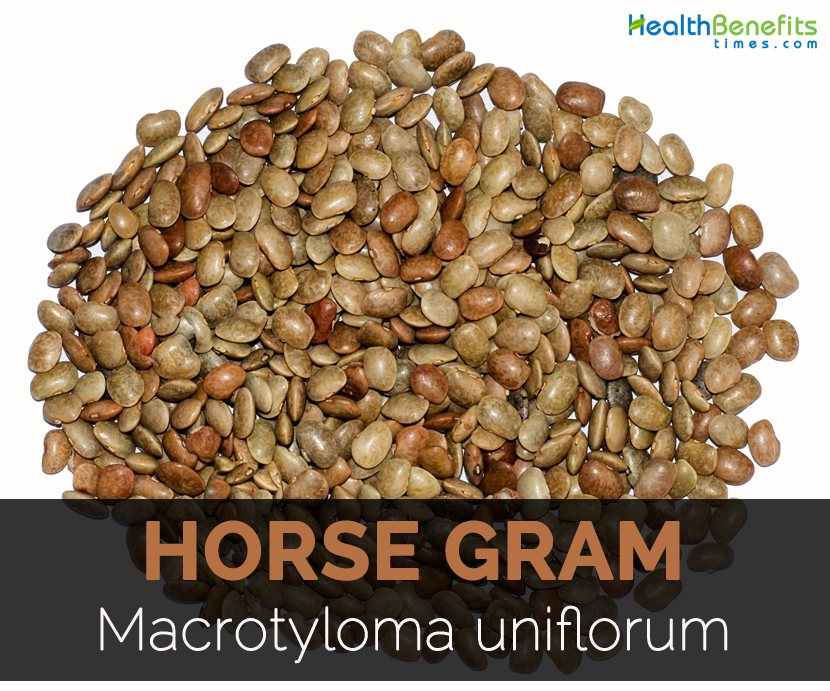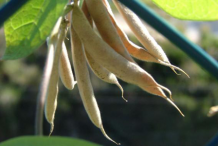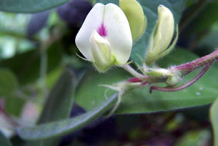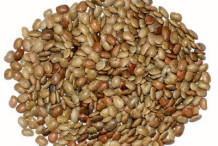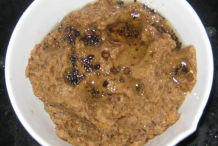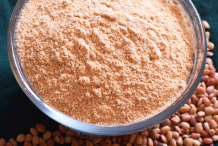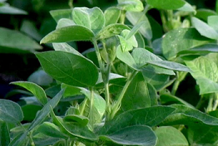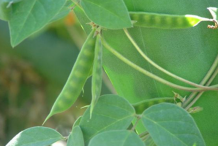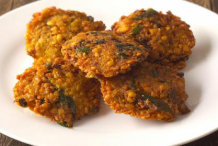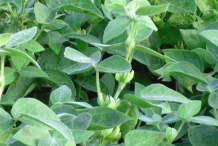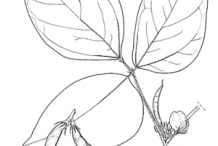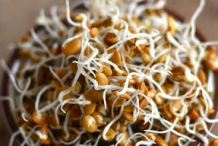| Horse gram Quick Facts |
| Name: |
Horse gram |
| Scientific Name: |
Macrotyloma uniflorum |
| Origin |
Southeast Asian subcontinent and some parts of Africa, as well as India |
| Colors |
Dark brown |
| Shapes |
Linear-oblong pod 3–8 cm × 4–8 mm, upcurved towards apex, acuminate, densely hairy when young, later more sparsely |
| Calories |
321 Kcal./cup |
| Major nutrients |
Iron (87.50%)
Phosphorus (44.43%)
Protein (44.00%)
Carbohydrate (43.85%)
Calcium (28.70%)
Total dietary Fiber (13.16%)
|
| Health benefits |
Beneficial for Diarrhea, Diabetes, Piles, Conjunctivitis, Ulcers, Kidney Stones, Digestion, Leucorrhea, Common Cold and Fever, Constipation, Cholesterol, Weight Loss, Menstrual Disturbances, Skin Rashes and Boils, Urinary Discharge |
Macrotyloma uniflorum commonly known as Horse gram is actually an undervalued plant native to Southeast Asian subcontinent and some parts of Africa, as well as India, where it has been considered as a main food for thousands of years. Many people are already familiar with the other varieties of grams, the most common being red, black, and green grams. Unfortunately, horse gram tends to get overlooked by the majority of people. Few of the common names of Macrotyloma uniflorum are Biflorus, horse gram, horse grain, kulthi bean, madras bean, madras gram, poor man’s pulse, dolic biflore, grain de cheval, kerdekorn, pferdebohne, pferdekorn, gahat, hurali and kalai. Since it is one of the lesser known beans, whole seeds of horse gram are generally utilized as cattle feed. However, it is consumed as a whole seed, as sprouts, or as whole meal in India, popular especially in southern Indian states.
Plant Description
Horse gram is a low-growing, slender, sub erect annual or perennial herb that grows about 30-60 cm tall with a perennial fibrous rhizome. Stem is annual, sparsely to densely covered with spreading or appressed whitish hairs. These legumes grow best on tropics and subtropics, grown mostly under dry-land agriculture. The plant is cultivated on wide range of soils; however black cotton soils, deep red loam and clay loam paddy soils are best for cultivation.
Leaves
Leaves are alternate, 3-foliolate; stipules lanceolate, 4–10 mm long, striate; petiole 1–7 cm long, rachis 2.5–10 mm long; petiolules 1–2 mm long. Leaflets are ovate-rhombic, obovate or elliptical, 1–7(–8) cm × 1–4(–8) cm, apex rounded to acute, base rounded, lateral leaflets asymmetric, hairy to glabrescent on both surfaces
Flower & fruit
Flowers are bisexual, papilionaceous; pedicel 1–7 mm long; calyx pubescent, tube 2 mm long, lobes triangular-lanceolate, 3–8 mm long, long-acuminate, upper pair entirely fused; corolla with cream, yellow or greenish yellow standard, often with a small purple blotch inside, obovate-oblong, 6–12 mm × 4–7 mm, wings and keel greenish yellow, 5–10 mm long; stamens 10, 9 fused and 1 free; ovary superior, stiped, 1-celled.The flowers turn into a linear-oblong pod 3–8 cm × 4–8 mm, upcurved towards apex, acuminate, densely hairy when young, later more sparsely so, margins glabrous, smooth or warty, dehiscent, 5–10-seeded. Seeds are trapezoidal, oblong or rounded-reniform, 3–8 mm × 3–5 mm, pale to dark reddish brown, speckled or mottled with black and orange-brown or all black.
Varieties
Four varieties are distinguished.
- Var. uniflorum: Pods are 6-8 mm wide and is native to lndia. It is widely cultivated in the tropics as cover and forage crop.
- Var. stenocarpum (Brenan) Verdc: Pods are 4-5.5 mm wide, leaflets are pubescent; sutures of pods not warted. It is wild plant in Acacia bushland and thicket in Africa and India.
- Var. verrucosum Verdc.: Pods are 4-5.5 mm wide, leaflets pubescent; sutures of pods obscurely to markedly warted. It is a wild plant in grassland in Kenya, Tanzania and Mozambique.
- Var. benadirianum (Chiov.) Verdc.: Pods are 4-5.5 mm wide, leaflets are densely velvety; sutures of pods slightly warted. It is a wild plant in sand dunes of Somalia and Kenya.
Health benefits of Horse gram
Horse gram is considered as a miracle super food that is widely consumed as a staple diet in the southern parts of India. It is rich in nutrients and have plenty of minerals too- phosphorus, calcium, protein and iron. Hence it is known to be very beneficial for human health, as much as it is useful for animal health too. Now let us take a very good look and learn more about the benefits of horse gram for our overall health
1. Diarrhea
Horse gram consists of good amount of fiber which helps with digestion and soaking up additional fluids from the intestine and the stomach. This reduces the occurrence of diarrhea and loose motion, and allows normal bowel movements to happen. One should have a handful of pre-soaked horse gram legumes early each morning, which encourages the digestive system to work better.
2. Conjunctivitis
You can use rose water to wash your eyes with when you suffer from conjunctivitis, or what you could do is to pre-soak a handful of horse gram seeds overnight. Next morning, strain the seeds and use the water to wash your eyes with it. The antioxidant levels in the water help combat the infection and keep the eyes soothed and calm, without the irritation. Thrice a day the water should be used to wash the eyes with.
3. Weight Loss
In Ayurveda it is said, if one consumes horse gram every day, weight loss happens for sure. This is only when you consume horse gram in powder form, and to this shall be added a dash of cumin seeds. The two should be mixed in a glass of water and drunk twice a day on an empty stomach at your own ease. Some prefer not to have horse gram for weight loss in this form, and some prefer to choose a plenity weight loss pill which is also fine. In such cases, the legume can be had soaked and raw, or mixed with pepper and bengal gram to form a crunchy salad and eaten.
4. Menstrual Disturbances
Menses problems are very disturbing, and unless one has them, one would not know how painful and energy draining it can be. For overcoming this painful situation, you can either have the soup of horse gram or have salads which would have horse gram in them, which helps bring down the levels of irritation related with menstrual disturbances. When you have irregular menstrual cycles or excessive bleeding, it is the high iron content in horse gram which will help maintain the levels of hemoglobin in the body. This is why, holistic experts recommend horse gram to women with menses issues.
5. Cholesterol
Research has concluded that Horse gram helps bring down the levels of LDL or bad cholesterol in the bloodstream. Bad cholesterol levels which stuck in the veins would be removed when horse gram is consumed, thanks to the levels of lipids in it that work its magic.
One should consume a handful of pre-soaked horse gram seeds twice a day on an empty stomach; so that the lipid levels work at their best and cleanse the veins off the bad cholesterol levels or the LDL levels in the blood.
6. Constipation
Constipation is caused due to the lack of fiber in the diet, lack of water intake, lack of minerals and also due to an unhealthy lifestyle, stress and many more reasons. This happens when the intestines and the stomach lining just above the duodenum are not in a position to expand and contract normally for the waste matter to get released. Since horse gram has powerful nutrients in it and also has plenty of fiber too, it can help combat the problems of constipation. Horse gram in such cases should be pre-soaked and eaten as a salad in raw form.
7. Piles
Piles happen when the veins in the rectum swell up and turn inflamed or painful. Instead of rushing to the pharmacy for medication and treatment, holistic experts recommend the use of horse gram. Soak a cup of horse gram overnight and consume the water the next day, and eat the horse gram raw as a salad embellishment too. The roughage in it along with the fiber helps treat piles effectively.
8. Skin Rashes and Boils
Horse gram can also be used as a topical face pack to treat rashes, boils and disorders of the skin to some extent as well. This is because it is antimicrobial and antibacterial, and has plenty of antioxidants in it along with minerals to nourish, replicate the healthy lipid layers of the skin and more.
Crush a handful of pre-soaked seeds overnight, and apply it as a face pack the next day. Wait for half an hour and gently wash off with cold water. This would help exfoliate the dirt, grime, and dead skin cells and also provide collagen boost to the skin and protect the skin from further harm and free radical attacks.
9. Common Cold and Fever
Common cold and fevers happen to us when the body’s immunity system is attacked and when the viruses house themselves in our bodies. For this, the ancient scholars of Ayurveda have recommended the consumption of horse gram when you have fever, coughs and cold, bronchial problems and asthma too.
Horse gram should be consumed as soups, which helps relieve the congestion and makes the nasal tracts open up by allowing the mucus membranes to soften up and melt. This helps with easy breathing since the required nutrients are boosting the metabolism of the body and the immunity too.
10. Urinary Discharge
Women suffering from urinary discharge can also suffer from embarrassment too. This is especially when urinary discharge is thick, inconsistent at times, foul smelling and continuous in some cases. There could be pains, infection and inflammation around the cervix and the vagina too. This happens when there is an irritation to the lining of the membrane, and the discharge can be foul smelling or thick, with a quantity increase when puberty hits or when sexual arousal is at its peak. Ayurveda opines, one should soak a handful of horse gram overnight in a bowl of water, and boil it the next day. This water should be consumed thrice a day to treat symptoms of the same.
11. Diabetes
Scientists from the Indian Institute of Chemical Technology have found that unprocessed raw horse gram seeds not only possess anti-hyperglycemic properties but also have qualities which reduce insulin resistance. This is possible since horse gram has the power to display ways to combat the formation of hyperglycemic properties in the body. In turn, horse gram helps bring down insulin resistance in the body too. Blood glucose levels are brought down and controlled, and it can help reduce the carb digestion rates as well, in turn bringing down the levels of blood glucose too. This is why it is used as a super food to treat type 2 diabetes in most cases.
12. Digestion
After a hearty meal, should feel acidic or don’t feel easy on the stomach within minutes to an hour or more; chances are you are suffering from indigestion pangs. This can lead to issues such as GERD and acid reflux, and this is what can make you feel uncomfortable too. This is why, horse gram is recommended to be the first thing in the morning on an empty stomach. This helps encourage the digestive tract and makes digestion an easy affair.
13. Leucorrhea
Women suffering from Leucorrhea have a tough time managing their sanitation needs. Leucorrhea is known to be a common and a normal discharge from the vagina. It can have a change in its consistency or color, and often is related with pains, infection and inflammation around the cervix and the vagina too. This happens when there is an irritation to the lining of the membrane, and the discharge can be foul smelling or thick, with a quantity increase when puberty hits or when sexual arousal is at its peak. Ayurveda opines, one should soak a handful of horse gram overnight in a bowl of water, and boil it the next day. This water should be consumed thrice a day to treat symptoms of leucorrhea.
14. Kidney Stones
Regular consumption of horse gram can actually help bring down the occurrence of kidney stones or remove the same from the body too. Kidney stones are basically a concoction of a compound known as calcium oxalate. And horse gram can actually get kidney stones removed overnight. This is because; horse gram is rich in iron and has a high content of polyphenols in it as well. Additionally, the antioxidant levels are high in kidney stones too. Soak a cup of horse gram in a bowl of water and to consume it raw the next morning. Doing this for a week it seems shows good results.
15. Ulcers
Horse gram can be very beneficial in treating various forms of ulcers, but not gastric ulcers. There are lipids in horse gram that come in very handy when the legume is consumed by those that suffer from peptic and mouth ulcers. Research and studies on the same have been done on rats and the animals have healed, and the same have been done on humans too and the results were positive. Even in Ayurveda, it is shown that mashed horse gram when consumed twice a day releases the lipids much needed for the body to heal itself from the ulcers.
https://www.youtube.com/watch?v=o-76RM5mu_g
Traditional uses and benefits of Horse gram
- Horse gram is recommended for persons suffering from jaundice or water retention, and as part of a weight loss diet in Telangana and Andhra Pradesh.
- It is considered helpful for iron deficiencies, and is considered helpful for maintaining body temperature in the winter season.
- Horse gram is considered a food with medicinal qualities in traditional siddha cuisine.
- Unprocessed raw horse gram seeds not only possess anti-hyperglycemic properties but also have qualities which reduce insulin resistance.
- Horse gram is considered a medicinal food. It is given to children suffering from mumps in Darjeeling and Sikkim.
- Water in which gahat is soaked is taken by people suffering from kidney stones in the belief that this dissolves the crystals.
- Horse Gram combats common cold, cough and fever.
- It eases breathing and opens up the blocked channels due to congestion.
- It cures Indigestion, reduces flatulence and kills Intestinal Parasites. Fiber content helps in easing the bowel movement and relieves from Constipation.
- Horse Gram is a good herbal remedy to get rid of Kidney Stones. Diuretic properties of the herb dissolve the stones and remove them through urine.
- Daily intake of Horse Gram helps in lowering blood glucose levels and cures Diabetes.
- Horse gram promotes the sperm production and treats Infertility. It removes impurity and increases the mobility of the semen.
- It is beneficial in reducing body fat and prevents from being obese. It consists of protein, fibers and fewer carbohydrates that help to maintain weight.
- Horse Gram is beneficial for those women who are suffering from Scanty Menses or Irregular Menses. The iron content in Horse Gram raises the hemoglobin levels.
- It relieves the problem of White Discharge.
- Seeds of horse gram are used for treatment of urinary stones in Indian Traditional medicines.
- If you have localized swelling, the paste of horse gram can be used for relief. It is this paste that stimulates the cells and helps with sweating, by opening the pores of the skin and pushing the toxins out through it.
- To get relief from hiccups, burn a few horse gram seeds and inhale the smoke. It gives relief in a jiffy.
- To treat renal calculi, use the powder of horse gram seeds every day. Consult a holistic expert on the dosage as per your body type for the same.
- To treat intestinal worms and piles or constipation too, horse gram seeds should be pasted and eaten.
- Boil horse gram in water and drink the water, to bring down fever, coughs and colds.
- The decoction of dry seeds of M. uniflorum is used in traditional medicine for amenorrhea, with rock salt for urolithiasis, bile stones, conjunctivitis, rheumatism, piles, with rock salt for diabetes mellitus, dysuria, colic and flatulence (with Asafoetida), oedema, with pepper for mumps, goiter and phlegmatic conditions.
- Decoction of seeds is also useful in the management of postpartum syndrome or to promote the discharge of lochia.
- Infusion of whole seed is an excellent remedy for rheumatic pain and hypertension.
- Infusion of seeds with cow’s milk is useful in the management of helminthes disorders.
- Kanji (gruel) of dry seeds with Jaggery is a remedy for jaundice.
- Anjana (collyrium) made with powder of seeds is applied for conjunctivitis.
- Inhalation of the smoke is beneficial for patients suffering from hiccough.
- The powder of toasted seeds is consumed with curd for gastric ulcers.
- Intake of horse gram seed powder with some water is beneficial in skin rashes and boils.
- Seeds boiled with water are indicated for obesity.
- Soup prepared from seeds is administered for hemorrhoids, splenomegaly and hepatomegaly.
- Decoction of root is given for leucorrhoea.
- Juice of plant provides a good cure in diarrhea.
- Powder of baked seed is rubbed over the body to manage excessive perspiration.
- Poultices of seeds are used to induce sweating.
- Paste of seeds is applied over the skin to enhance complexion.
- Paste of seeds is also applied for the goiter and mumps.
Ayurvedic Health benefits of Horse gram
- Swelling: Roast some Horse Gram and tie in a cloth. Heat the swelled area with this.
- Impotence: Make porridge of Horse Gram and Rice. Eat with Milk regularly for a month.
- Elephantiasis: Grind some Horse Gram with sand of ant hills with and white of an egg. Apply on the affected area.
- Kidney stones: Prepare soup. Have once a day. OR Boil 50 grams Horse Gram. Add salt to taste. Have once a day. (This will break up the stone and the crystals will be eliminated with urine. Be prepared for painful urination. The jagged edges of the gravel may temporarily injure the urethra as they are forced out. But, not to worry! The healing is very fast.)
- Gallstones: Soak Horse Gram overnight. Mash them in same water and drink.
- Kidney Stones: Take equal quantity bark of Garlic Pear Tree, Land Caltrops, Saccharum Spontaneum and Horse Gram. Grind to make powder. Take quarter tsp with warm water thrice a day.
- Ulcer: Add 1/4 cup of Horse Gram a pinch of Asafoetida and 2 pinches each of dried Ginger and Liquorice. Boil. Take daily with One tablespoon Honey for 30 Days.
- Kidney Stones: Take Three Leaved Caper bark, Land Caltrops, Saccharum Spontaneum and Horse Gram in equal quantity. Powder them. Have one teaspoon twice a day with water. This is the very effective formula for Kidney Stones.
- Kidney Stones: Add crushed Pomegranate in Horse Gram soup. Mix well. Drink it once a day when bearable hot.
- Bladder Stones: Soak half cup Horse Gram overnight. Boil them next morning until Gram gets mashed. Add some salt to taste and Pomegranate in it. Have it when bearable hot once a day.
- Common Cold, Cough & Sore Throat: Boil one tablespoon of Horse Gram in a cup of water and grind it to make a paste. Add a pinch of Black Pepper powder and mix. Have it 2 times a day. You can also drink the strained water.
- Hydronephrosis: Prepare a fine paste of Pomegranate seeds. Add one tablespoon of the paste in one cup of Horse Gram soup.
Culinary uses
- Horse gram soup is popular dish in Telangana and Andhra Pradesh; it is served in most of the Telugu speaking people’s weddings and ceremonies and tastes wonderful with boiled rice.
- Horse gram is used in special kinds of dishes in Kerala.
- Horse gram is commonly used in Tamil dishes, including kollu chutney, kollu porial, kollu avial, kollu sambar, and kollu rasam in Tamil Nadu.
- Horse gram is often used to make Kulith Usual, pithla and laddu in Maharashtra, and specifically the coastal Konkan region and Goa.
- It is used to make popular dishes like Kulitan Saaru, Kulitan Upkari, Kulitan Ghassi and idli like preparation called Kulitan Sannan.
- Hurali is also used in preparation like usali, chutney and Basaaru.
- Kulath is used to make Khichdi in himachal Pradesh.
- It is cooked in a round iron sauté pan to prepare Ras, a favorite of most Kumaonis in uttarakhand.
Other Facts
- Horse gram has been shown to prevent soil erosion.
- Macrotyloma uniflorum plants can survive in extremely hot temperatures.
- These beans are commonly used as cattle feed in various parts of the world.
- The 1000-seed weight is 15–50 g.
Precautions
- Consult your doctor in case of Tuberculosis.
- Does not use for long periods as it may reduce the production of Semen and Low Libido.
- If you suffer from gastric ulcers and hyperacidity, you should not consume horse gram seeds since it would worsen the condition.
- Horse gram seeds can worsen cases of bleeding problems. If you suffer from heavy periods, consult your doctor first and then consume horse gram seeds.
- If you suffer from a case of gout, horse gram is to be avoided as well. Ayurveda says it harms the rakta dhatu cycle.
- If you consume medication for anemia, horse gram should be avoided since it is a contra indication.
- For liver issues and excess bile production issues, you should not consume horse gram.
- Expectant mothers are asked to stay away from horse gram too.
- If you have plethora and TB, you should not have horse gram as well.
Horse gram recipes
1. Horse gram soup aka Ulavacharu
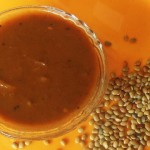
Ingredients
Directions:
- Soak the horse gram seeds over night and pressure cook until soft.
- Drain the water and keep it aside for later use. (The water’s color will be chocolatey)
- Grind the dry roast mustard, cumin and pepper seeds to fine powder.
- Mash half of the cooked horse gram.
- Heat the oil in the pan and shallow fry the curry leaves.
- Add the tamarind paste, strained horse gram water, roasted powder, smashed horse gram and salt.
- Add sufficient water and ensure the gravy just isn’t too thick.
- Add the remaining horse gram and mix.
- Remove from flame.
- Sprinkle perfectly chopped coriander leaves within the gravy.
- Serve along with chapatti or steamed rice and enjoy!
2. Horse gram Sundal
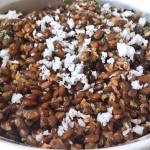
Sundal is a well-liked roadside snack from South India (mainly Tamil Nadu). Boiled pulses stir fried along with simple spices and garnished along with fresh coconut, lemon juice and cilantro, it is loaded with fiber and low in calories.
Ingredients
- 1 cup horse gram /kolotho/kollu
- 1 large onion (chopped into medium-sized pieces)
- 1/2 tsp mustard seeds
- 1/4 tsp cumin seeds
- 1 tsp urad dal
- 1 sprig curry leaves
- 2-3 dry red chili
- a pinch of asafoetida
- a pinch of turmeric
- 2 tsp oil
- salt to taste
- freshly grated coconut/ finely chopped cilantro for garnishing
Directions:
- Cook it along with 2/3 cup water, a pinch of turmeric and salt to taste in a pressure cooker. Allow for 4-5 whistles. Take away from flame whilst keeping aside till steam escapes.
- Open the lid and strain the boiled lentils. Don’t throw the water as it could be utilized for making rasam.
- Cooking – Heat oil in the wok. Add some broken red chilis, urad dal, mustard seeds as well as cumin seeds. After the urad dal starts turning a little brown, add asafoetida, curry leaves and onion. Fry till onion becomes clear.
- Add the boiled lentils and stir fry for 2-3 mins. Adjust the salt if needed.
- Remove from the wok and garnish along with fresh coconut/cilantro. Serve as a healthy afternoon snack .
3. Horse Gram Masala Curry

Ingredients
- Horsegram (Muthira) – 2 cups(soaked overnight)
- Onions – 2 nos(finely chopped)
- Ginger -garlic paste – 1/2 tsp
- Tomatoes – 2 nos(chopped)
- Fennelseeds (Perinjeerakam) – 1/2 tsp
- Coconut – 1 cup(grated)
- Cloves (Grambu) – 3 nos
- Cinnamon (Karugapatta) – 1 no
- Chilly powder – 1 tsp
- Turmeric powder – 1/2 tsp
- Coriander powder – 2 tsp
- Coriander leaves – 3 springs (chopped)
- Oil – As required
- Salt – As required
Directions:
- For preparing horse gram masala curry, heat oil in the pressure cooker as well as fry the onions till brown in color.
- Add in fennel seeds, cloves and cinnamon. Saute it well.
- Mean while blend the tomatoes and fry it combined with the onions.
- Add in turmeric powder, ginger-garlic paste, salt, chilly powder and coriander powder. Fry on low flame up until the oil separates.
- Toss in the horse gram as well as grated coconut along with required water. Pressure cook for till done.
- Garnish with coriander leaves.
- Horse gram masala curry is prepared. Serve hot with rice or chapatti.
4. Horsegram Chutney
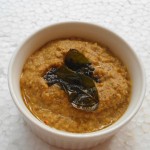
Ingredients
- Horsegram- 1 cup
- Garlic glove-1
- Coriander seeds- 1 tsp
- Cuming seed- 1/2 tsp
- curry leaves- few
- Red chillies-3
Directions:
- Boil horsegram in cooker for 3-4 whistle whilst keeping it aside
- Heat a pan add oil and fry coriander seeds, cuming seeds, red chillies, garlic and curry leaves
- Add horse gram dhal and salt
- Grind it coarsely
- Horsegram chutney goes well along with rice.
References:
https://www.itis.gov/servlet/SingleRpt/SingleRpt?search_topic=TSN&search_value=506257#null
https://davesgarden.com/guides/pf/go/164199/
https://npgsweb.ars-grin.gov/gringlobal/taxonomydetail.aspx?id=23076
http://www.theplantlist.org/tpl1.1/record/ild-2840
https://plants.usda.gov/core/profile?symbol=MAUN4
https://en.wikipedia.org/wiki/Macrotyloma_uniflorum
https://www.feedipedia.org/node/628
https://uses.plantnet-project.org/en/Macrotyloma_uniflorum_(PROTA)
Comments
comments


